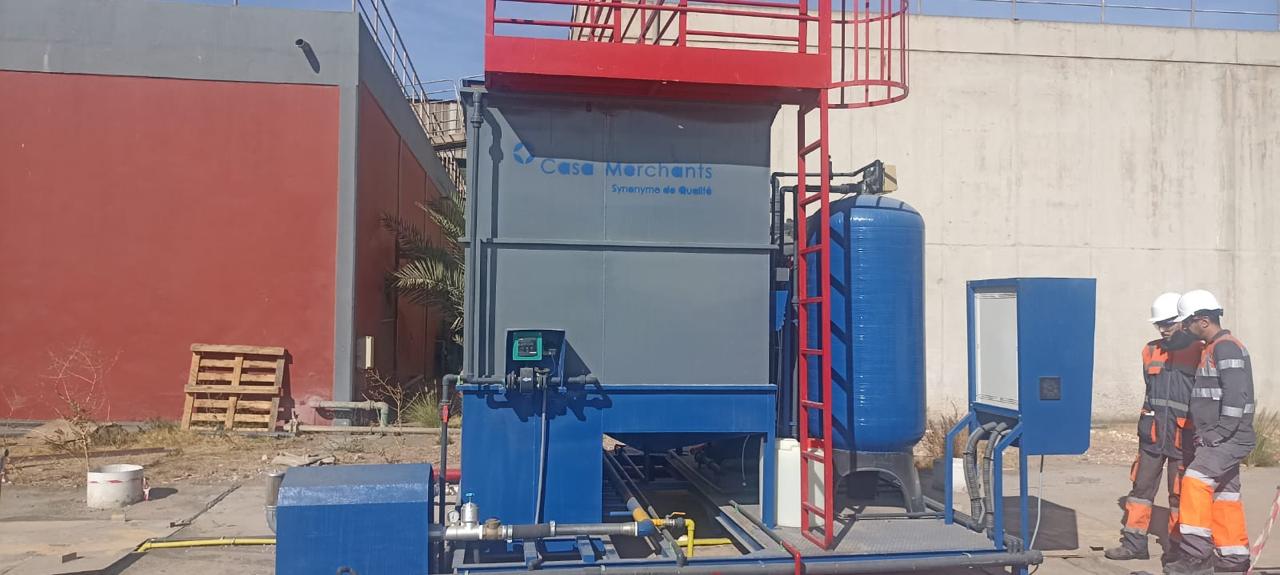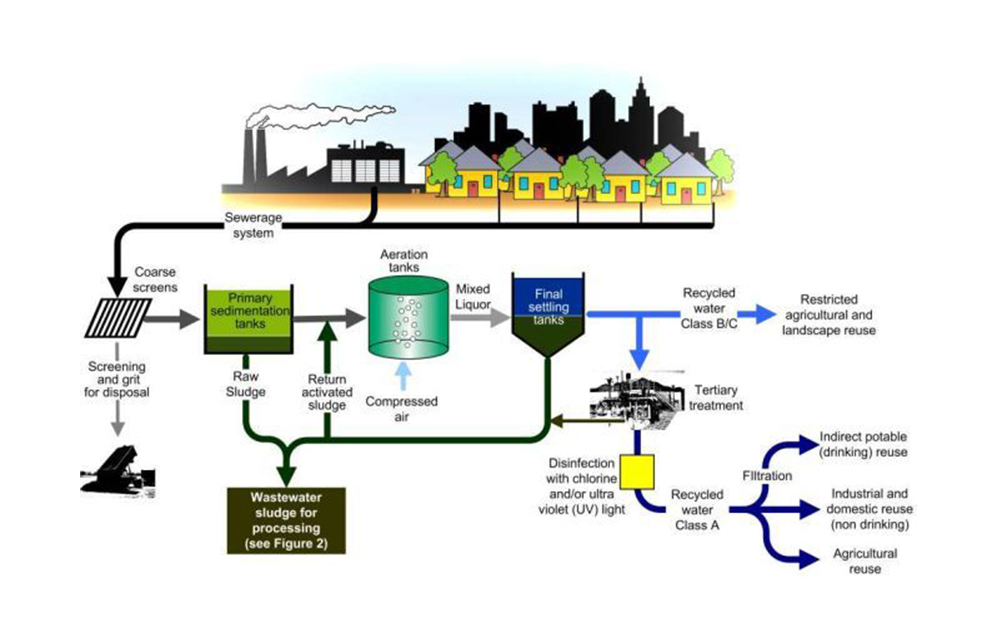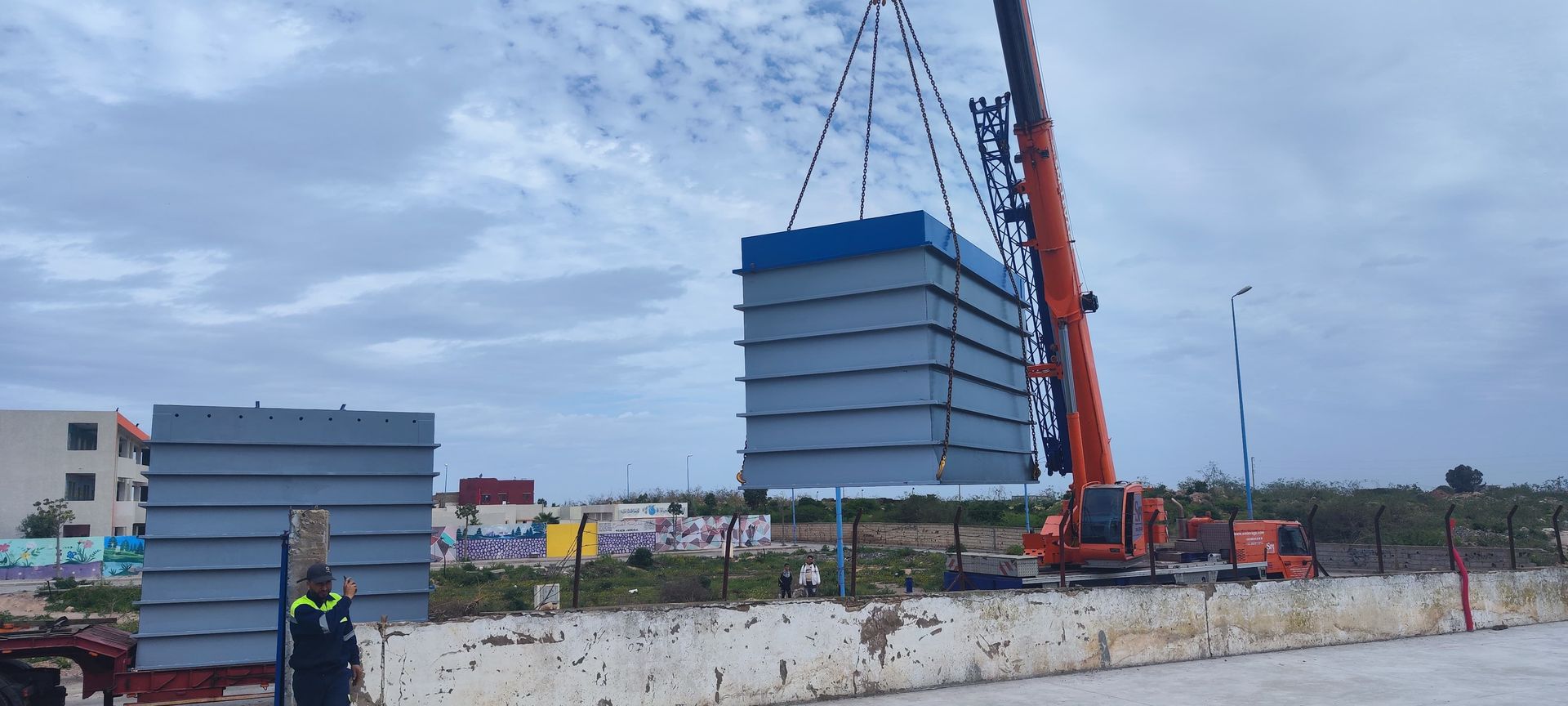The Best Wastewater Treatment
Plant (WWTP)
Wastewater treatment plants (WWTPs), also known as sewage treatment plants, play a fundamental role in protecting our environment and public health. Every day, considerable amounts of water contaminated by human activities (domestic, industrial) are generated. Without adequate wastewater treatment, these effluents would pollute our rivers, lakes, and groundwater, with disastrous consequences. At Casa Merchants, we understand the critical importance of these facilities and offer cutting-edge expertise in wastewater treatment.
What is a wastewater treatment plant (WWTP)?
A wastewater treatment plant (WWTP), or sewage treatment plant, is a complex industrial facility designed to clean collected wastewater before it is discharged into the natural environment (rivers, sea) or reused. It receives wastewater via a collection network and, through a succession of physical, chemical, and/or biological processes, removes pollutants: solid materials, organic matter, nutrients (nitrogen, phosphorus), and pathogens. The facility that treats wastewater is therefore commonly called a WWTP or sewage treatment plant.

What is the role of a WWTP?
The primary role of a sewage treatment plant is multifaceted and essential:
- Protecting the environment: By removing pollutants, the WWTP prevents the contamination of aquatic ecosystems, preserves biodiversity, and maintains the quality of water resources.
- Preserving public health: Untreated wastewater can contain harmful bacteria, viruses, and parasites. The WWTP drastically reduces these health risks.
- Enabling water reuse: In some cases, after advanced treatment, purified water can be reused for irrigation, certain industrial processes, or groundwater recharge, contributing to sustainable resource management.
- Recovering by-products: Sludge resulting from treatment can be recovered for agriculture (as fertilizer, after stabilization) or to produce energy (through methanization).
How does a sewage treatment plant work? The main stages of wastewater treatment
Wastewater treatment in a WWTP generally follows several key stages, although specific technologies may vary:
- Preliminary Treatment: This is the first, mechanical phase.
- Screening: Grids retain the largest debris (plastics, paper, branches) to protect downstream equipment.
- Grit Removal: Sand and gravel, being denser, settle at the bottom of a tank.
- Grease and Oil Removal: Lighter grease and oils float to the surface and are skimmed off.
- Primary Sedimentation: Water flows slowly through large basins (settling tanks) where remaining suspended solids settle to the bottom, forming primary sludge. Floating materials are also collected.
- This is the heart of the purification process, where microorganisms (bacteria, protozoa) break down dissolved organic pollution and nutrients. In aeration tanks, oxygen is injected to promote the activity of these aerobic bacteria.
- Clarification (or secondary sedimentation): After biological treatment, the water passes into another settling tank where biological sludge (microorganisms and degraded organic matter) settles. A portion of this "activated" sludge is often recycled to the beginning of the biological treatment to maintain a sufficient concentration of microorganisms.
- Depending on the sensitivity of the receiving environment and discharge standards, additional treatments may be necessary to more specifically remove nitrogen, phosphorus, or for disinfection (by UV, ozonation, or chlorine) to eliminate remaining pathogens. Advanced technologies like reverse osmosis and desalination can be considered for superior water quality, particularly for reuse.
- Sludge collected during the different stages is treated to reduce its volume, water content, stabilize it (stop its fermentation), and sanitize it. It can then be recovered (agricultural spreading, composting, incineration with energy recovery) or stored.

What are the types of sewage treatment plants? Focus on technologies
There are different types of sewage treatment plants, adapted to the size of the community, the nature of the effluents (domestic, industrial), and local constraints. Common technologies include:
- Activated Sludge Plants: The most widespread biological process, described above.
- Constructed Wetlands (or reed bed filters): A more extensive and ecological solution for small communities, where purification is ensured by microorganisms attached to plant roots and the filter substrate.
- Trickling Filters (or biofilters): Water percolates through a porous material on which purifying bacteria grow.
- Membrane Bioreactors (MBR): A combination of biological treatment and membrane filtration, allowing for very high-quality water and reducing the plant's footprint. This technology is particularly suitable for industrial wastewater treatment solutions available in our shop.
- SBR (Sequencing Batch Reactor): All stages of biological treatment occur sequentially in the same tank.
The choice of the wastewater treatment process will depend on a detailed analysis of needs and constraints. For specific equipment, such as those related to industrial reverse osmosis that we offer, specialized expertise is required.
Casa Merchants: Your Expert Partner in Wastewater Treatment Solutions
At Casa Merchants, we provide our know-how for the design, equipment supply, and optimization of your wastewater treatment systems, whether for municipal or industrial applications. We offer a wide range of solutions, from conventional technologies to the most innovative processes, to ensure the compliance of your discharges and optimize your operating costs. You can explore our product range directly in our shop dedicated to wastewater treatment.
Our experts are ready to analyze your specific needs and offer you the most suitable solutions. Whether you have a project for the creation, rehabilitation, or optimization of your sewage treatment plant, we support you at every step.

Conclusion
The wastewater treatment plant is an indispensable link for a healthy environment and sustainable water management. Understanding its complex role and operation allows for a better grasp of the issues related to pollution control.
For any questions or to discuss your wastewater treatment project, do not hesitate to contact us. The Casa Merchants team is ready to provide you with personalized advice and effective solutions.